Holmes: Sherlock and Mycroft — Brotherly love
Did you even know that Sherlock Holmes, The World’s Greatest Detective was actually one of two brothers? Neither did I, but in the card game Holmes: Sherlock and Mycroft from publisher Devir Games and designer Diego Ibanez, two players will face off to prove that brotherly rivalry is far more important than any grand title might suggest.
The setup is simple; a bomb explodes at the houses of parliament and the blame is placed squarely on the shoulders of a young laborer. Mycroft Holmes (portrayed as a kind of pseudo bad guy) is the police appointed detective responsible for bringing him to justice, meanwhile Sherlock Holmes, having just begun his career, acts as the good guy tasked with proving his innocence.
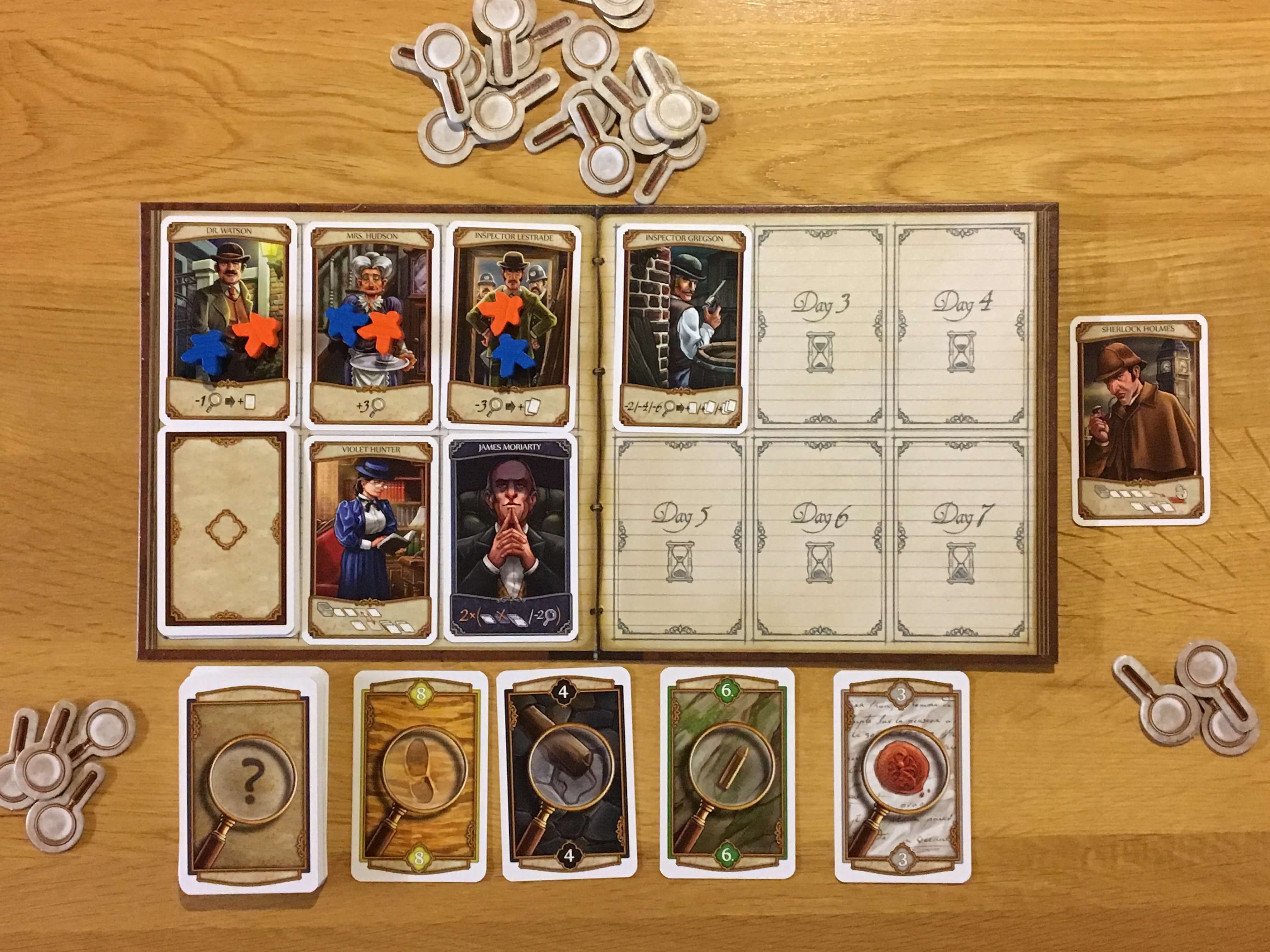
What follows this brief narrative is an almost-as-rapid setup involving a simple card layout that is completely randomised from one game to the next. The sales blurb claims that this randomisation gives Holmes: Sherlock and Mycroft exceptional replay value and to some extent that is true — because you almost will never see the same selection of cards appearing in the same order twice.
Despite the small box, you may be surprised to learn that Holmes: Sherlock and Mycroft packs in a lot of content, all of which is produced to a gorgeous standard. There’s a two leaf board that folds out as a diary — Dr. Watson’s diary, in fact — and then two decks of cards, one for characters and one for clues. There are also a handful of meeples in two distinctly different colours, a well written rules pamphlet and a handful of magnifying glass shaped investigation tokens.
Aside from the neat, tidy and thematic board, the character cards really steal the show and will always be the centre of attention. Each character, from the ever present Mrs. Hudson to the elusive James Moriarty, is exquisitely drawn and brought to life with a cartoonish but very detailed hand. Meanwhile, the clue cards all feature a clear colour palette depending on what they show, as well as some detailed art depicting the specific piece of evidence in question.
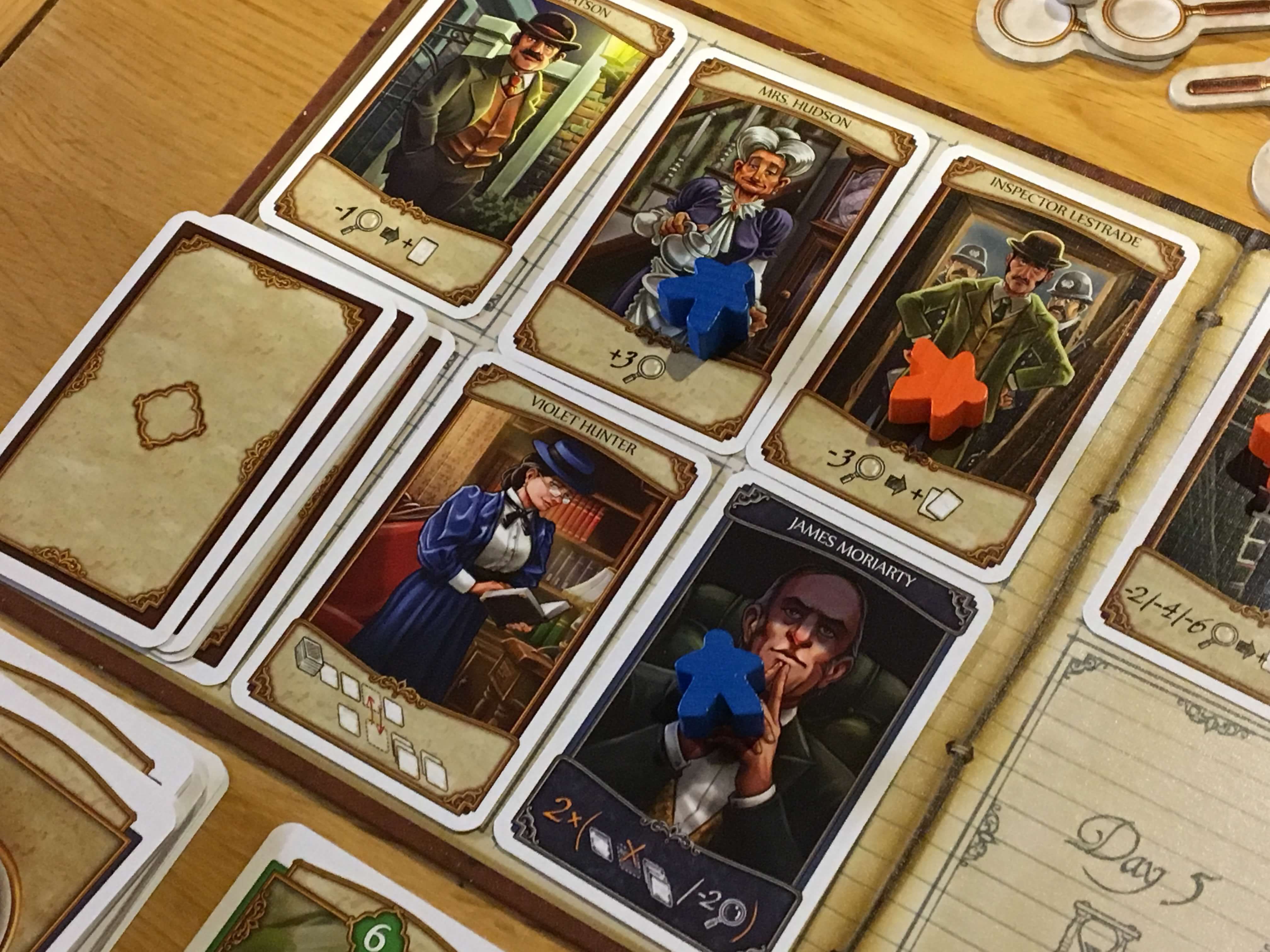
When the board is laid out, you’ll notice that the spaces indicate three named spaces (for Mrs. Hudson, Dr. Watson and Inspector Lastrade) and then nine other spaces, eight of which contain numbered days — two for day one and then one each for days two to seven. These days represent the week during which the investigation will take place, and as the days unfold, new characters (each with their own rules and bonuses) will be laid out. The final space is reserved for the face down deck of character cards.
Every game begins with the three named characters who offer set benefits, as well as the two characters who are drawn for day one. The game unfolds with the players taking turns to place their meeples onto the board. As an example, when a meeple is placed onto Dr. Watson, the player can spend an investigation token to take a face up clue. Mrs. Hudson allows the player to draw three new investigation tokens. As you can probably imagine, the additional characters do less predictable (but occasionally more powerful) things.
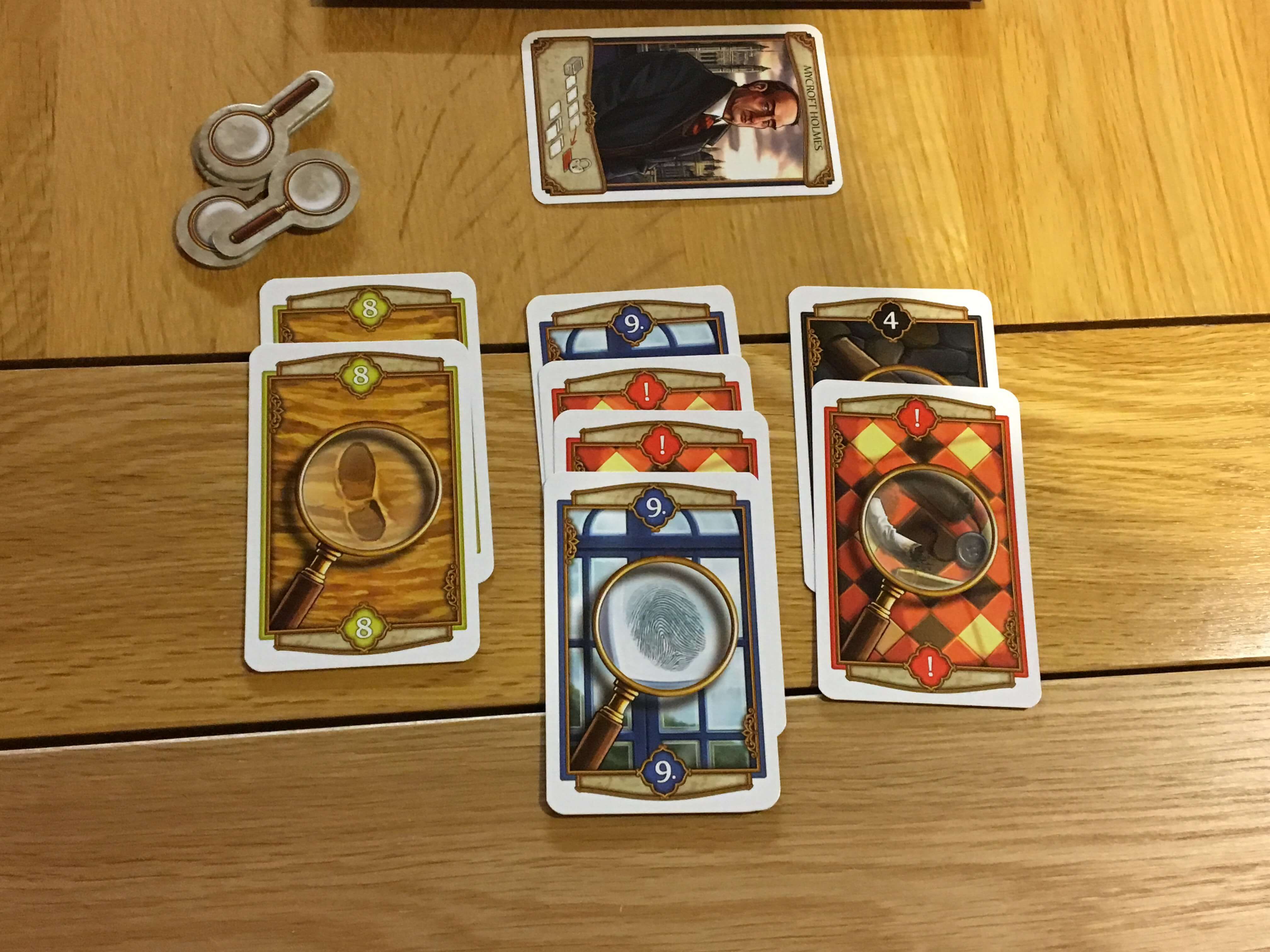
When both players have placed each of their meeples onto the board (and I should note that both players may visit the same character on the same day, but the same player may not place two of their meeples onto the same character) then the day ends. At this point, the next day begins and a new character is added to the board. Any of the “random” characters that were visited by both players on the previous day must now be flipped, indicating that they have gone into hiding — they will refresh on the next day.
For the next turn, the players will pick up their meeples and move them elsewhere, so it’s normal to have meeples from the previous round laid down to indicate that they have not yet moved on the new day. Play continues as per the previous day, with players using character abilities until all their meeples are spent, then moving onto the next day. In this way, the board builds out with more and more options, but the players never gain access to additional meeples or turns, which makes for some interesting decisions.
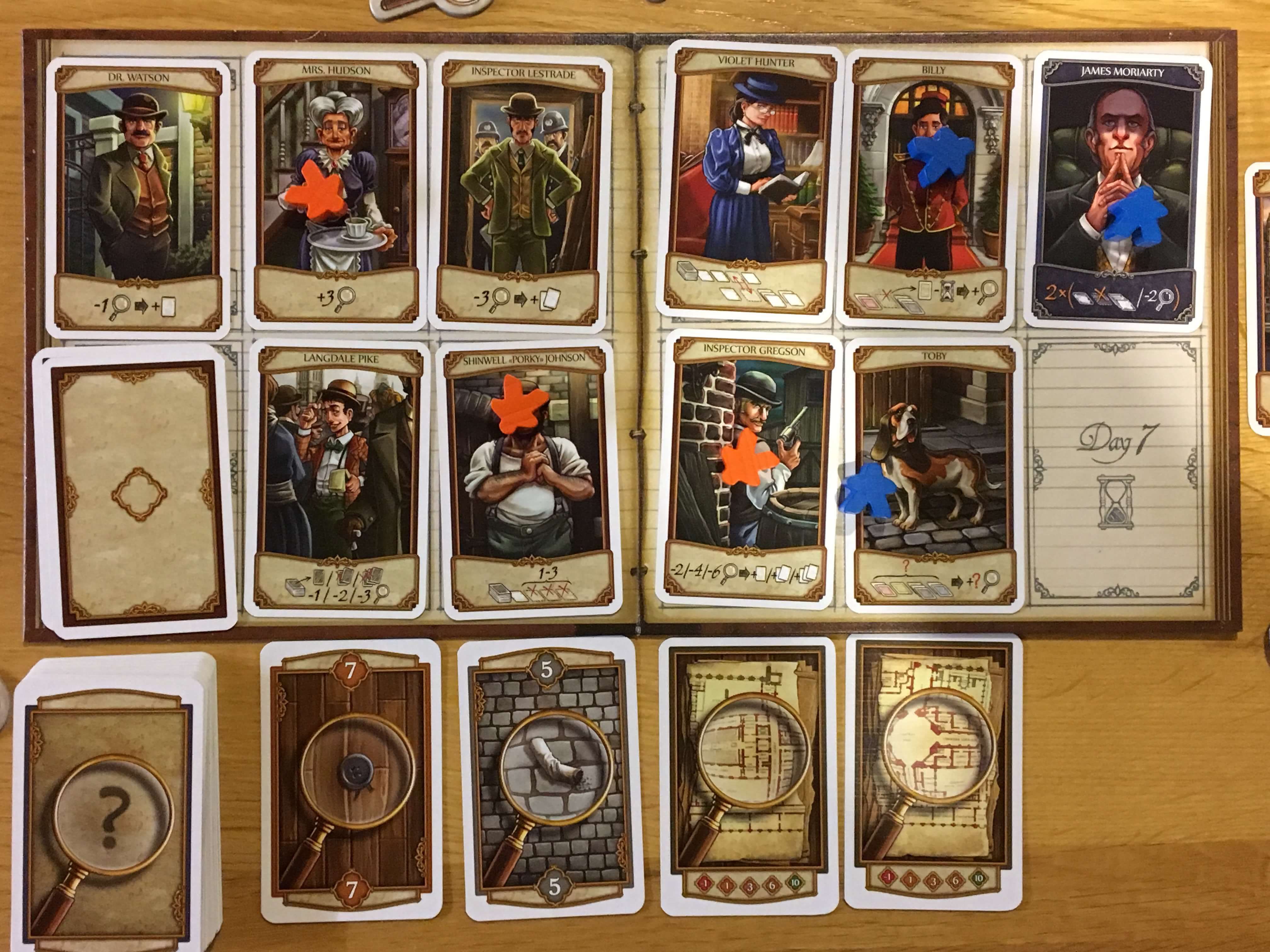
The object of the game is to claim different clue cards by either drawing them directly via characters or by trading investigation tokens for them. There are numerous colours of clue cards (and some wild ones). Each clue has a numbered value which can affect certain bonuses at the end of the game. To put it bluntly, you’ll be comparing each numbered set of clue cards against your opponent and then scoring the difference, with a few bonuses for things like collecting all of a set of numbered cards.
The net result of this is that Holmes: Sherlock and Mycroft straddles the lines between worker placement and set collection really nicely, with the added benefit of being more or less entirely portable. It’s a shame that it is exclusively a two player game, but I can’t imagine how it would have worked with more players anyway and in some ways the head to head focus makes it a more exciting experience overall. There are also map fragments and a few other ways of scoring, but that’s all in the details really.
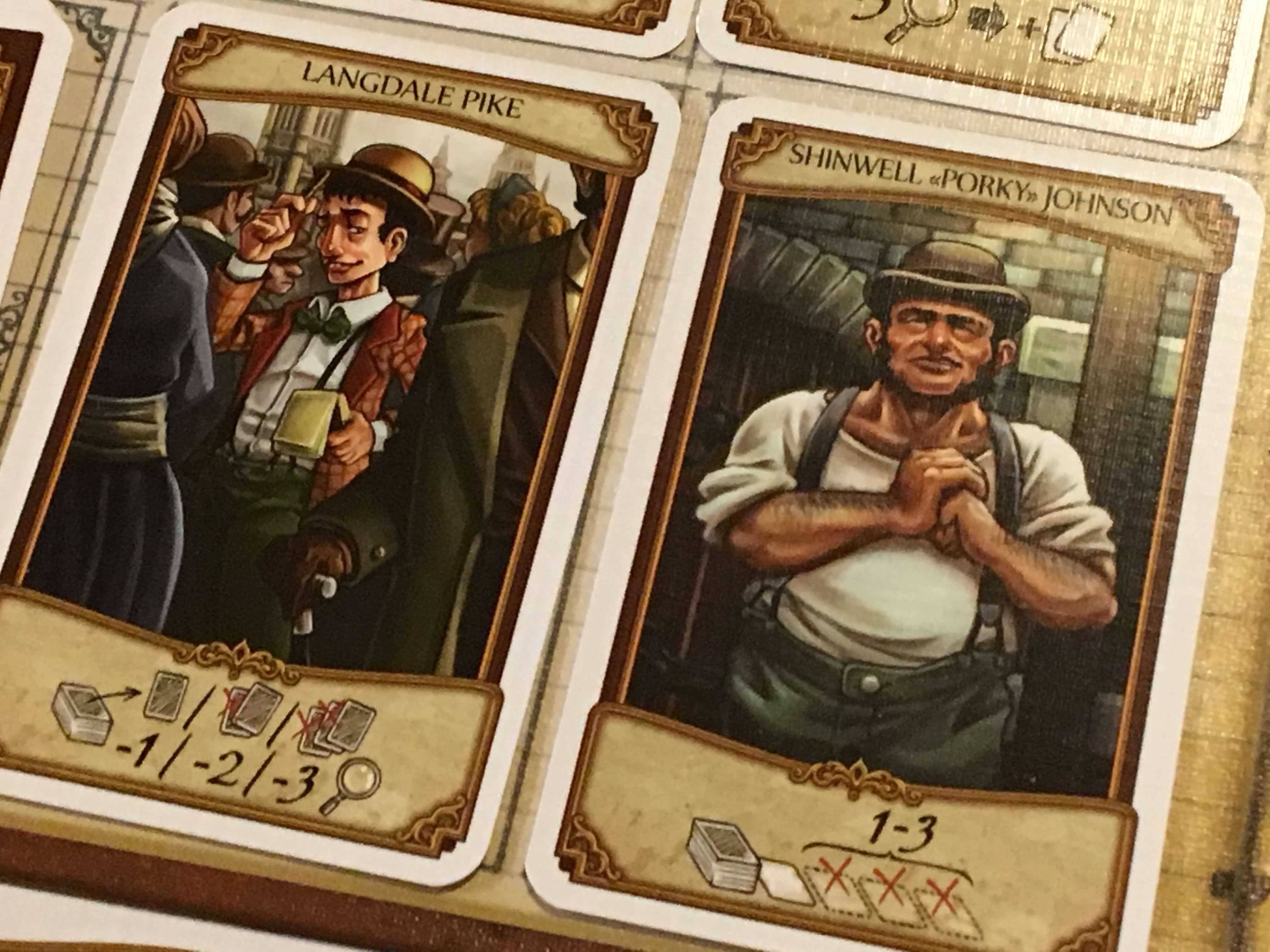
Each game of Holmes: Sherlock and Mycroft lasts about thirty to forty minutes and as mentioned, the variation from one game to the next can be high. This is helped by the fact that there are various optional elements to either include or not. The nemesis cards (like Moriarty) are drawn, take effect, then are immediately replaced by another card from the deck. Twists like this actually do change things up and keep the game fresh when played repeatedly by the same two people.
I’m surprised by how much I enjoyed playing Holmes: Sherlock and Mycroft, especially after a few games. I tend to find that smaller games like this do little to promote repeated plays, but on this occasion, I couldn’t have been more wrong. Whilst it is a small game that has a fairly limited scope, it’s actually very, very enjoyable. Devir may be a small publisher, but you wouldn’t believe it based on the quality, theme and mechanical quality of this title — certainly one to keep an eye out for.
Holmes: Sherlock and Mycroft is available now, including over at Amazon. You can find out more by visiting the website of publisher Kosmos.
Love board games? Check out our list of the top board games we’ve reviewed.

Comments are closed.